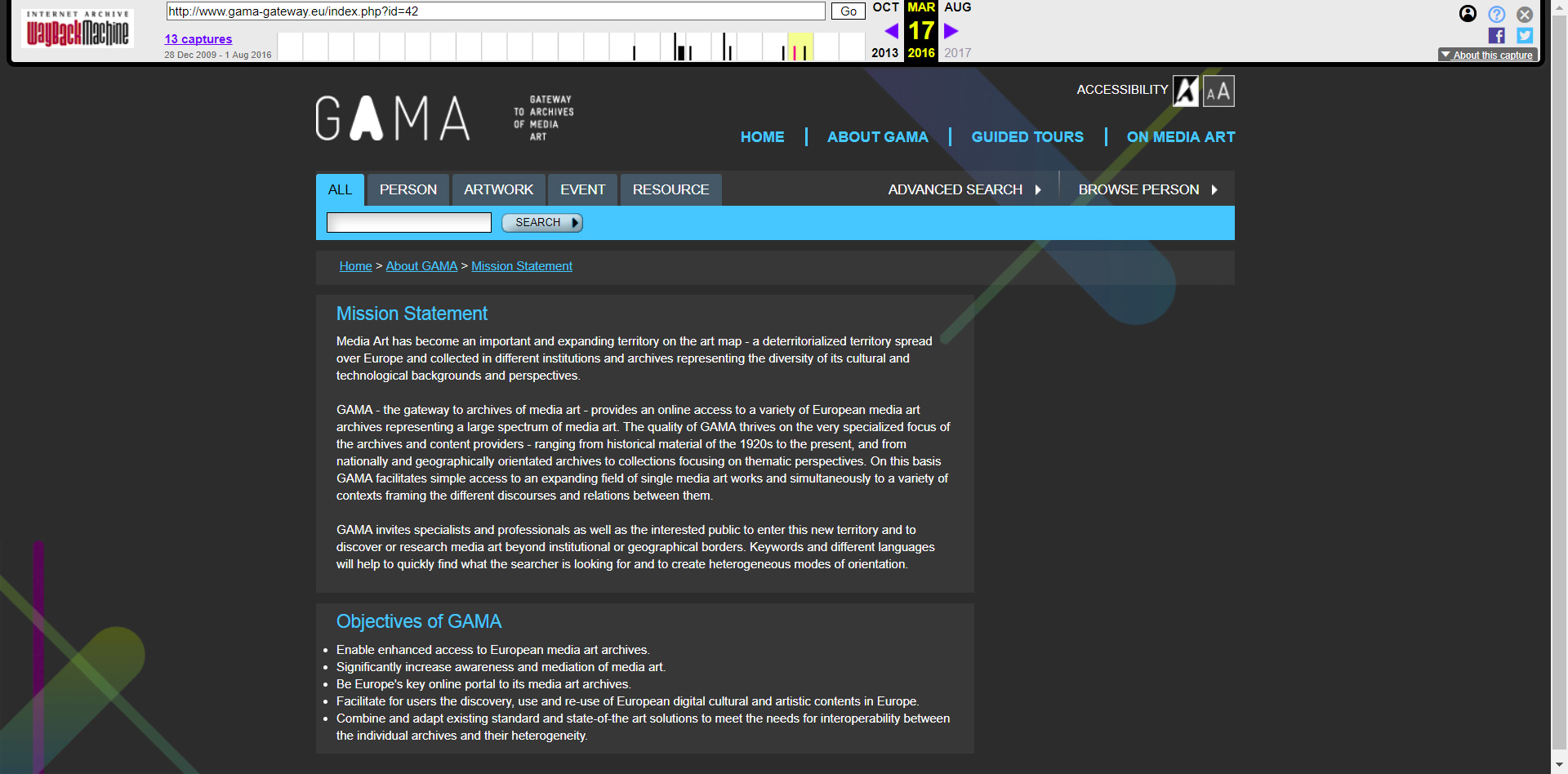In the course of the GAMA (Gateway to Archives of Media Art) project, nineteen institutions from twelve European countries—a consortium consisting of archives, distributors, media art centres, research institutes, universities, and two private enterprises—created the GAMA web portal that united eight European media-art databases, with the financial help of the eContentplus program of the European Commission.
The first step in the working process was technical and content analysis of the database structure of the participating archives, together with analysis of metadata and the included works. Based on this, the GAMA database was created. During the process it became clear that the existing metadata structure models (including Europeana) do not cover the needs of this collection of media art works.
The eight archives (distributors, festivals, media centres) built their respective databases on differing priorities, so a new, united metadata scheme had to be created suited especially for media art. The vocabulary (keywords, genres) describing the content of the archives was also quite different, so a unified list was created. This vocabulary was used to develop the search functions. The detailed search, articulated as work–event–resource, was based on the metadata analysis, and became a determining element of the database structure and the list of genres as well.
One could search for authors, titles, dates, archives, genres and keywords. On the result page for each individual piece one can find the description of the work, production date, authors and contributors with CVs, additional information, images, and videos. An image-based search (for similar-looking works) function is also available by clicking on any image. The automatic speech recognition module makes searching possible in the audio channels of the works, and a character recognition module can search the subtitles of the videos.
Textual resources are also available in the database. The informational texts available in the Media Wiki guides visitors through a given theme, much like a guided tour in a museum, selecting items from different archives, and involving multiple database items. The GAMA Media Wiki functions the same way as Wikipedia, using the same software with additional functions attached—like embedding videos or querying metadata from the database.
The portal premiered at the Ars Electronica festival in 2009, where participating archives presented characteristic works from their collections. The consortium also held a workshop on strategies of archiving media art. It is a pity that, due to financial reasons, this complex, integrated database is no longer available online.
Members of the GAMA consortium included: Akademia Górniczo-Hutnicza, Krakow; Akademie der Bildenden Künste Wien,; argos-interdisciplinary centre for art and audiovisual media, Brussels; Atos Origin s.a.e., Madrid; C³: Center for Culture & Communication, Budapest; CIANT International Centre for Art and New Technologies, Prague; Heure Exquise !, Mons-en-Baroeul; Hochschule für Gestaltung und Kunst, Zürich; Hochschule für Künste Bremen; Hogeschool voor de Kunsten, Utrecht; IN2 Search Interfaces Development Ltd, Lindau; Les Instants Vidéo Numériques et poétiques, Marseille; Ludwig Boltzmann Institut Medien.Kunst.Forschung, Linz; Nederlands Instituut voor Mediakunst Montevideo/Time based Arts, Amsterdam; SCCA Center for Contemporary Arts, Ljubljana; Staatliche Hochschule für Gestaltung Karlsruhe; Stiftelsen FilmForm, Stockholm; Technologie-Zentrum Informatik, Universität Bremen; Universitat de Barcelona - Laboratori de Mitjans Interactius, Barcelona.

